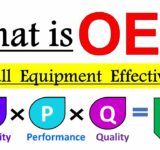Testing native and hybrid mobile apps is an essential aspect of the software development process, as it helps to ensure that the apps function correctly and provide a good user experience.
Native apps are developed specifically for a particular platform, such as iOS or Android, while hybrid apps are built using web technologies that can be run on multiple platforms.
Testing native and hybrid mobile apps involve various activities, including functional testing, performance testing, and usability testing.
It is essential to thoroughly test mobile apps to ensure they are reliable, efficient, and easy for users. This can be done through various methods, like manual testing, automated testing, and using testing tools.
What Is Native Testing?
Native mobile app testing is performed on a mobile application or software specifically designed for a particular platform or operating system, such as iOS or Android. The goal of native testing is to ensure that the application is fully functional and performs well on the specific platform for which it was designed.
Native testing may involve testing the application’s user interface, functionality, performance, and compatibility with the platform and its devices. It may also include testing the application’s integration with the platform’s features and functionality, such as push notifications or in-app purchasing.
Native testing is typically done by a team of testers familiar with the platform and its specific requirements. For example, they may use various tools and techniques, including manual testing, automated testing, and simulation, to test the application’s performance and functionality.
Overall, native testing is an essential step in the development process of a mobile application, as it helps ensure that the application is fully functional and performs well on the specific platform it was designed for.
What is Hybrid Testing?
Hybrid testing is a testing approach that combines two or more different testing methods, techniques, or practices to get the best results. This can involve combining manual testing with automated testing or combining different types of automated testing, such as unit testing and functional testing.
One of the main benefits of hybrid testing is that it allows testers to take advantage of the strengths of different testing methods and techniques while mitigating their weaknesses.
For example, manual testing is suitable for exploratory testing and testing scenarios that are difficult to automate, but it can be time-consuming and prone to human error. Automated testing is fast and efficient, but it can be challenging to set up and maintain. By combining manual and automated testing, testers can get the benefits of both approaches while minimizing their respective drawbacks.
There are many different ways to implement hybrid testing, depending on the specific needs and goals of the project. Some common approaches include:
- Combining manual testing with automated testing: This involves using manual testing to explore the software and identify potential issues and then using automated testing to validate the findings and ensure that the software is working as expected.
- Combining different types of automated testing: This involves using different kinds of automated testing, such as unit testing, integration testing, and functional testing, to cover various aspects of the software.
- Combining testing approaches: This involves using different techniques, such as agile testing and waterfall testing, to get the benefits of each method.
Overall, hybrid testing is a flexible and practical approach to testing that allows testers to tailor their testing strategy to the specific needs and goals of the project.
Difference Between Native Mobile App Testing And Hybrid Mobile App Testing
Native app testing and hybrid app testing are two approaches to testing the functionality and performance of mobile applications. Both types of testing are essential for ensuring that an app is reliable and user-friendly, but they differ in several ways.
- Differences are based on the core functionality.
- Native app testing refers to apps specifically designed and developed for a particular mobile operating system, such as iOS or Android. These apps are typically written in the programming language specific to the operating system, such as Swift or Java, and are installed directly onto a device through an app store.
- On the other hand, hybrid app testing refers to testing apps designed to work on multiple mobile platforms. These apps are typically developed using web technologies such as HTML, CSS, and JavaScript and are wrapped in a native app container that allows them to be installed and run on different devices.
- One of the main differences between native and hybrid app testing is how the apps are built.
- Native apps are designed and developed specifically for a particular operating system, which means they are optimized for that platform’s specific hardware and software. This can make native app testing more complex, requiring thorough testing on each platform to ensure the app works as intended.
- Hybrid apps are built using web technologies designed to work across multiple platforms. This means hybrid apps are generally easier to develop and test, as they can be run on a wide range of devices with minimal changes.
- Another key difference between native and hybrid app testing is the tools and frameworks used.
- Native app testing typically requires specialized tools and frameworks specific to the tested operating system. These tools may include emulator environments, debuggers, and other software designed to help developers and testers identify and fix issues with the app.
- Hybrid app testing often relies on more general-purpose tools and frameworks designed to work across multiple platforms. This can make hybrid app testing more flexible and easier to set up, but it may also require more manual testing to ensure that the app functions correctly on each platform.
- Finally, native and hybrid app testing may also differ regarding the resources and expertise required.
- Native app testing often involves a team of specialized developers and testers familiar with the operating system and programming language being used.
- Hybrid app testing may require a more diverse team with expertise in web technologies and cross-platform development.
Native app testing and hybrid app testing are two approaches to testing the functionality and performance of mobile applications.
Native app testing is typically more complex and requires specialized tools and expertise, but it can offer a more optimized and reliable app experience. At the same time, hybrid app testing is generally easier to set up. It requires fewer technological resources, but it may not provide the same level of performance and optimization as native app testing.
Conclusion
Native and hybrid mobile apps are two different types of mobile applications, each with advantages and disadvantages. Testing these apps with the right approach is crucial to ensure a high-end customer experience.
Among testing tools, TestGrid is the preferred automation testing tool for businesses to test their applications reliably. It can be used by anyone without technical knowledge, as it has an easy-to-understand interface with a drag-and-drop feature. It also lets you reuse all the test cases multiple times, thus saving the precious time of testers.
TestGrid helps users to perform end to end testing be it mobile app testing, cross browser testing, performance testing and more. Users can start their automation journey for free.







